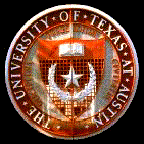
Department of Astronomy
The University of Texas at Austin
1 University Station C1400, RLM 16.224
Austin, TX 78712-0259
Email: sj@astro.as.utexas.edu
Phone: (512) 471 1395
Fax : (512) 471 6016
Office : RLM 16.224
URL : http://www.as.utexas.edu/~sj
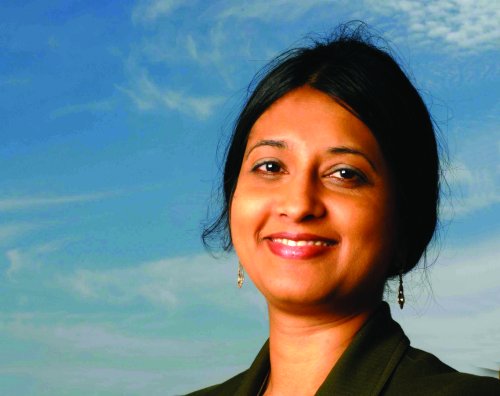

|
Dr. Shardha Jogee Department of Astronomy The University of Texas at Austin 1 University Station C1400, RLM 16.224 Austin, TX 78712-0259 Email: sj@astro.as.utexas.edu Phone: (512) 471 1395 Fax : (512) 471 6016 Office : RLM 16.224 URL : http://www.as.utexas.edu/~sj |

|
|
Education
|
I am a Professor in the Department of Astronomy at the University of Texas (UT) at Austin, conducting research on the evolution of galaxies. Prior to joining UT, I was a tenure-track astronomer at the Space Telescope Science Institute (STScI) which is responsible for science operations of NASA's Hubble Space Telescope (HST) and the future next generation James Webb Space Telescope (JWST). |
|
CV & Publications
|
|
|
Awards |
|
|
Research |
|
|
Classes |
|
|
Education and Public Outreach |
|
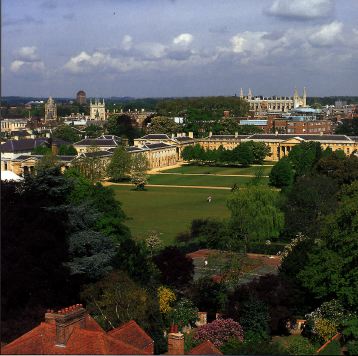
|
Total grant awards since 2003 = $1,866,329 with $964,748 as Principal Investigator (PI).
Science grant awards since 2003 = $1,171,329 with $869,748 as PI.
Education and outreach grant awards since 2003 = $695,000 with $95,000 as PI.
Itemized details follow:
- National Science Foundation (NSF) Grant ($311,748), June 2006 (PI).
(Bars and their Impact on Galaxy Evolution over the Last Eight Billion Years)
- NASA Long Term Space Astrophysics (LTSA) Grant ($558,000), Mar 2003 (PI).
(Structure and Dynamics of Local and Intermediate Redshift Disks)
- Hubble Space Telescope Cycle 16 award (180 orbits; $68,26), GO-11082, 2007
(Deep NICMOS Imaging of GOODS)
- Hubble Space Telescope Cycle 15 award (164 orbits; $88,000), GO-10861, Apr 2006
(An ACS Treasury Survey of the Coma Cluster)
- Hubble Space Telescope Cycle 14 award (80 orbits; $50,190) GO-10395, 2005
(Environmental drivers of galaxy evolution: an HST survey of Abell 901/902 supercluster)
- Hubble Space Telescope Cycle 13 award (31 orbits; $72,977), GO-10428, 2004
(The colours of QSO host galaxies at z=2 and the evolution of their stellar masses)
- Education and Public Outreach award ($50,000) for the ACS Treasury survey of the Coma Cluster, Dec 2006 (PI).
(A Cluster of Activities on Coma from the Hubble Space Telescope, StarDate, and McDonald Observatory).
- NASA Education and Public Outreach award ($45,000), Mar 2006 (PI).
(Building a Bridge to Texas High School Science Teachers and Students).
- NSF STEM Undergraduate Education award (DUE-0807140), 2008 ($600,000; Co-I).
(Scientists for Tomorrow)
- American Association of University Women Educational Fellowship (AAUWEF), 1996
- Amelia Earheart Fellowship, Zonta International, 1996
- Yale University J. F. Enders Research Grant, Yale University, 1995
- Sigma Xi Grants-in-Aid of Research, Sigma Xi Society, 1995
- Yale University J. F. Enders Fellowship, Yale University, 1995
- Elected to status of Fellow, Cambridge University, England, 1990-1992
- Undergraduate Academic Scholarship in Physics, Cambridge University, England, 1989-1992
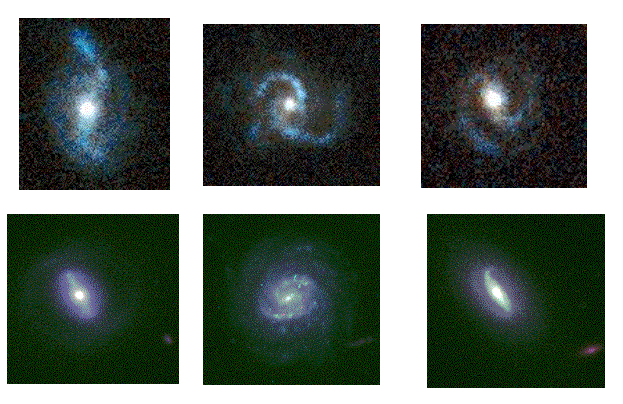
|
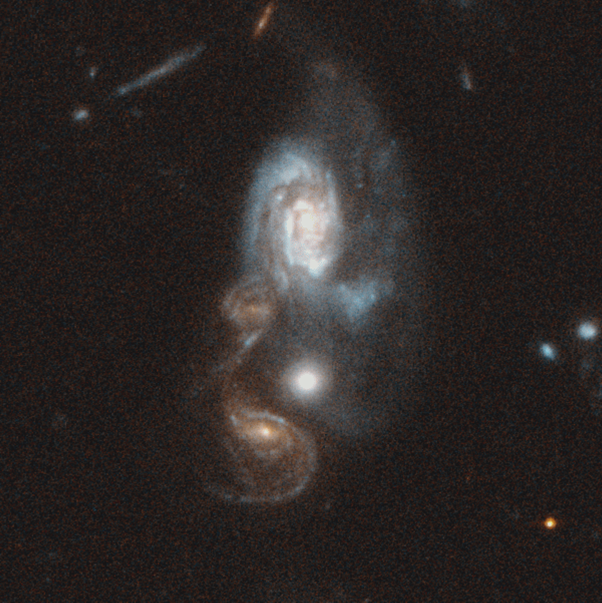
|
Excerpts from (GEMS) Left: Examples of bars and spiral arms in disk galaxies at redshifts z~0.3-0.9. or lookback times of 3.6--7.5 Gyr, from Jogee et al (2004). Right: A particularly spectacular double galaxy interaction. (SOURCE: the GEMS collaboration; Jogee et al. 2003)
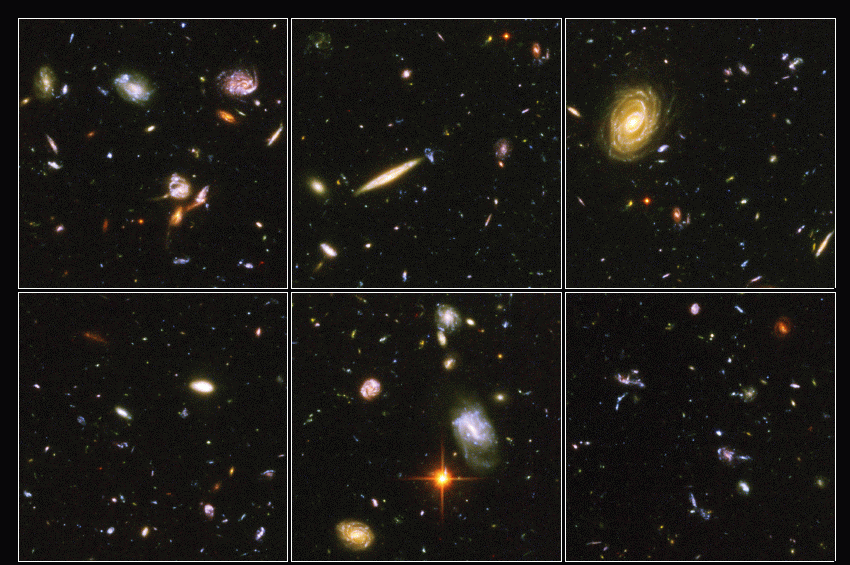
|
The Hubble Ultra Deep Field (HUDF), the deepest visible-light image ever made of the Universe, (Credit: NASA, ESA, S Beckwith and HUDF home team ) shows the first galaxies to emerge from the so-called "dark ages," (the time shortly after the big bang when the first stars reheated the cold, dark universe), and chronicles a period when the universe was younger and more chaotic, with violent interactions between galaxies.